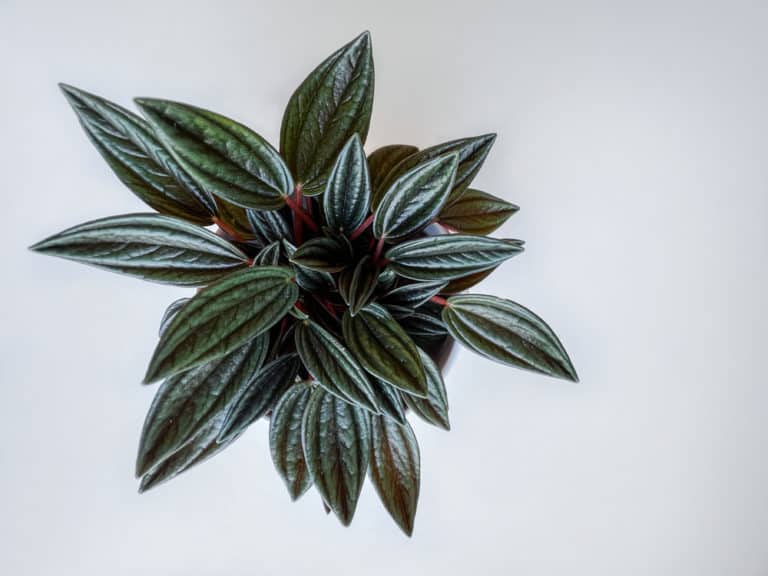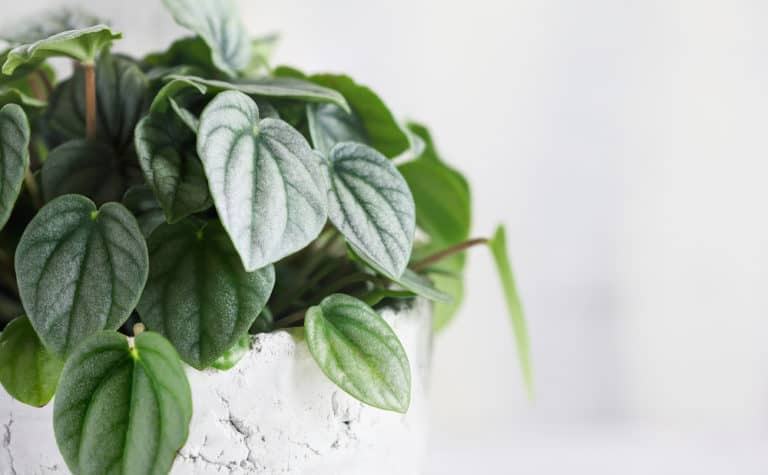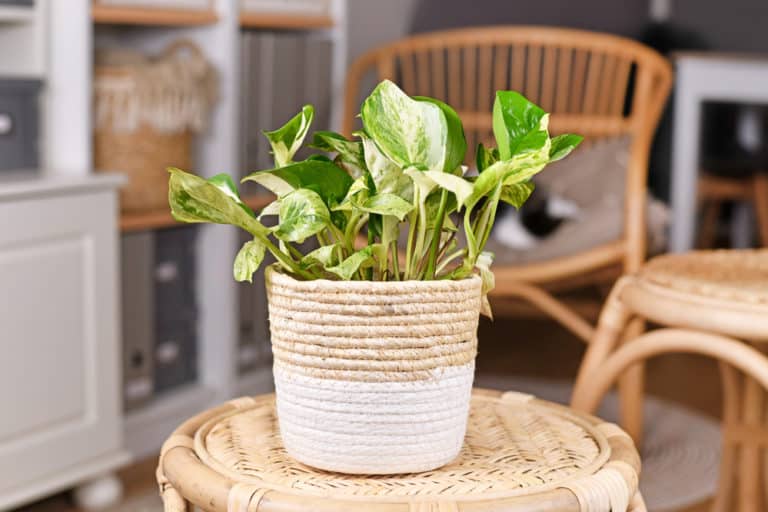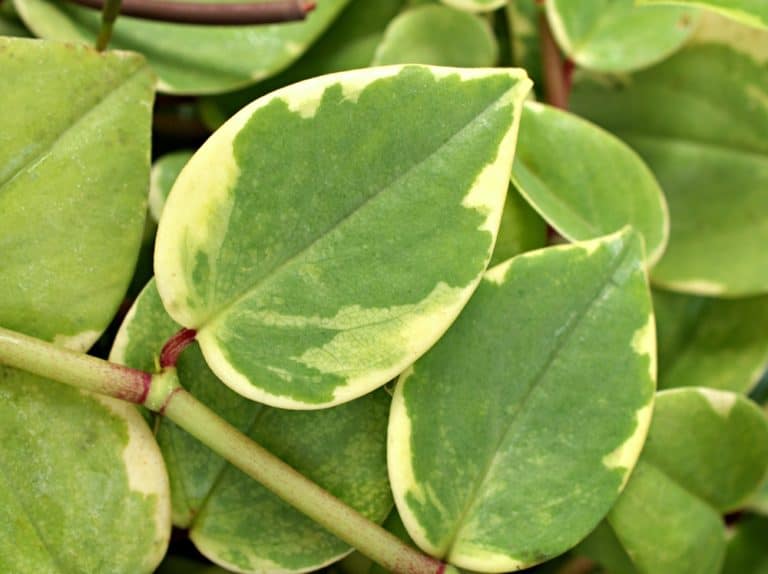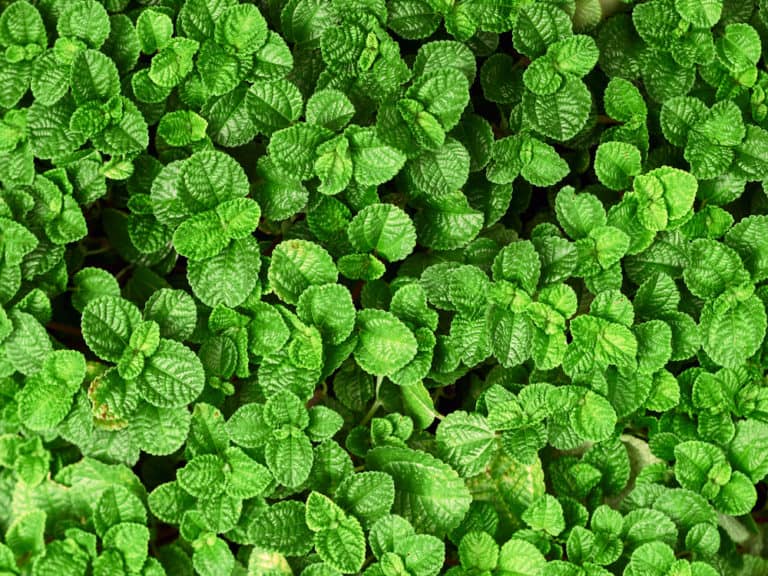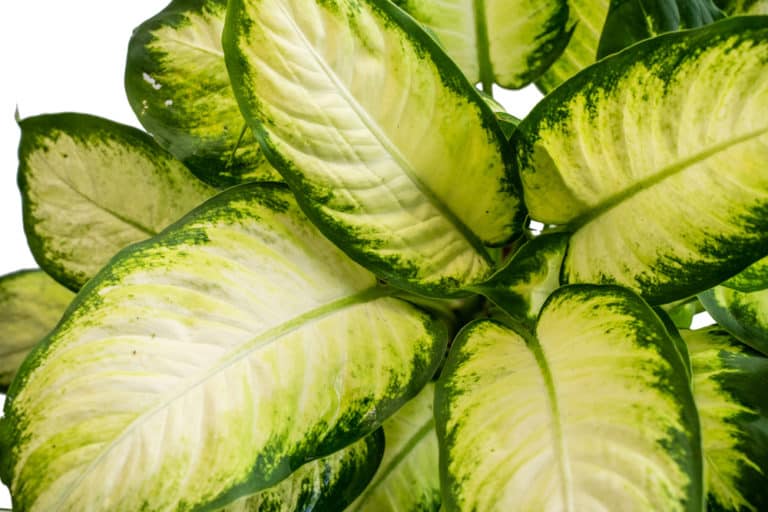Rhipsalis Cereuscula ‘Rice Cactus’ Care Guide (2024)
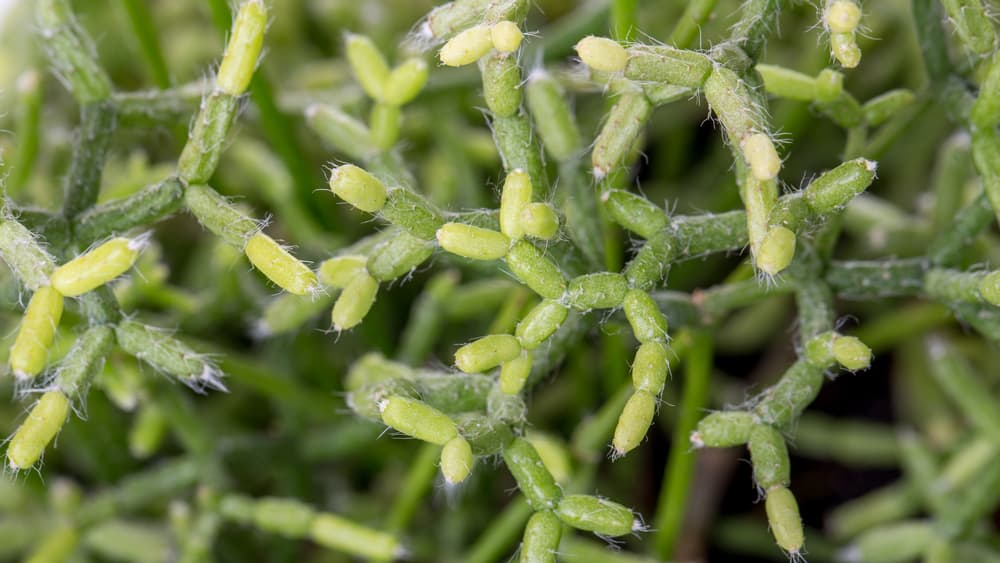
The Rhipsalis cereuscula is a small shrub cactus found growing mostly on rocks and tree trunks in the tropics. Coming from a genus with an abundant species, the Rice cactus attracts attention with its unique set of stems that may become dangly over time. An ideal indoor plant that’s easy to care for.
| Scientific Name | Rhipsalis cereuscula |
| Common Name | Rice cactus, Coral-cactus, Mistletoe Cactus |
| Light | Bright indirect sunlight |
| Watering | Twice a week or as needed |
| Temperature | 60°F to 75°F (16°C and 24°C) |
| Hardiness Zone | USDA Hardiness Zone 10a to 11b |
| Humidity | 45 – 50% |
| Soil Type | Gritty and rich soil mix |
| Soil pH | Slightly acidic to acidic (5.0 to 6.5). |
| Fertilizing | A balanced fertilizer once every two weeks (during the growing season) |
| Repotting | Every 1 to 3 years |
| Pruning | At least once a year |
| Propagation | Stem cuttings |
| Toxicity | Has mild toxicity |
| Mature Size | 24 inches to 5 feet tall |
| Bloom Time | Year-round at best-growing conditions |
What’s Unique About Rhipsalis cereuscula?
The Rhipsalis cereuscula plant is an epiphytic shrub, meaning it grows upon another plant. It stands out among succulents and cacti because it features a multitude of tiny cylindrical stems.
The heavily branched appearance is due to the long and slender branches holding out the stems which later give rise to dainty creamy white blooms.
The name ‘Rhipsalis’ comes from the ancient Greek word, ‘wickerwork’, pertaining to the fascinating morphology of the plant. Meanwhile, the term ‘Cereuscula’ means small candles or small torch, may be due to the structure of the flower.
The Coral cactus is native to the rainforests of Central and South America and is widely distributed in other tropical and subtropical regions such as Brazil and Uruguay.
Rhipsalis cereuscula Care
The Rhipsalis cereuscula plant care revolves around the provision of adequate lighting, maintaining the ideal temperature range (60-70°), and minimal watering. During the growing season, feed the plant with a balanced fertilizer once every two weeks.
If you’re not a first-time gardener, chances are you’d easily go about the basics of rice cactus care, but it wouldn’t hurt to be more informed.
Light
The Rhipsalis cereuscula light requirements are influenced by the natural habitat from which the plant originates, where it mainly grows in lower canopies.
Due to this, the rice cactus light needs to be bright and filtered. But it also grows well under partial to full shade conditions.
If you wish to grow the plant indoors, be sure to place it in a humid room with a fair level of temperature and away from sunny windows.
Avoid full sun exposure especially at noon because it may scorch the leaves and may create unpleasant spotting. With just enough light, the coral cactus is a perfect pot plant and a hanging specimen.
Watering
As a succulent, the Rhipsalis cereuscula watering needs are pretty straightforward. Water regularly and the plant rewards you with a lush set of foliage. But the plant can also tolerate a bit of underwatering as it is capable of storing water in its leaves.
When grown outdoor, water rice cactus on weekly basis, particularly in spring and summer. Reduce watering in half once the cold season commences.
The trick is to water thoroughly, making sure that the excess drains out completely. You may want to check first when the top inch of the soil feels dry to the touch. Avoid soggy soil as this can cause root rot in the long term.
Temperature
The optimum Rhipsalis cereuscula temperature range is between 70°F to 75°F (21°C to 24°C) during the day and 60°F to 70°F (16°C and 21°C) at night.
They grow favorably at USDA hardiness zone 10a to 11b. Not a cold-hardy species and thus exhibits more high-temperature tolerance.
Maintaining an ideal temperature for rice cactus is crucial for them to proliferate indoors. When grown outside, it’s also important that they will not be exposed to extreme cold weather as this predisposes them to freeze injury.
The flowering of Coral cactus plants is greatly influenced by temperature and you can expect that they will flourish as they are exposed to a warmer temperature.
Humidity
Given the tropical environment in which they thrive, the Rhipsalis cereuscula humidity requirement ranges from 50 to 55 %. An average home would have a relative humidity level of at least 45-50 %. This may be challenging especially for those residing in colder regions.
So in order to meet the ideal humidity for rice cactus, some measures employed are regular misting and setting up of a pebble tray half-filled with water to increase air moisture. You can also use a humidifier, or simply place the plant near your other houseplants because plants tend to release moisture in the air as they begin to transpire.
Soil
The Rhipsalis cereuscula soil consists of a gritty mix of organic matter such as peat moss and some perlite or one part sand. A commercial soil mix may be used but you may refrain from adding in starters as this may only double the concentration of fertilizers that are typically incorporated into planting-ready potting media.
Organic matter not only improves growth but also enhances soil structure which proves to be beneficial in the long term. Moreover, the ideal ph level for rice cactus is from slightly acidic to acidic (5.0 to 6.5).
Pro tip: Be sure to use a pot with sufficient drainage. It is vital that the soil for rice cactus is well-draining but at the same can hold sufficient moisture.
Fertilizer
The use of fertilizer for rice cactus is often not necessary. However, the plant may still benefit from added nutrients during the growing season and especially if you noticed that the plant is not growing properly.
A low balanced soluble fertilizer ratio of 8-8-8 (8% nitrogen, 8% phosphorus, 8% potassium ) or 10-10-10 (10% nitrogen,10%phosphorus,10% potassium) are suitable and can be used as a Rhipsalis creuscula fertilizer.
The recommended schedule for applying fertilizers is once every two weeks, ideally during spring and summer. You do not need to feed the plant during the onset of the autumn or winter season.
Potting & Repotting
When it comes to Rhipsalis cereuscula repotting, the first and crucial step is to prepare the recommended potting mix – which is a combination of fresh soil, organic matter, peat moss, and perlite. Also, be sure to choose a pot size at least twice the current pot and one that has sufficient drainage holes.
Pro tip: Begin by filling up the container with half of the potting soil. Plant upright and put the remaining soil carefully. Firm the soil around the plant and place in a warm and humid spot that receives bright, indirect light. Repotting rice cactus is usually done every one to three years.
Pruning
The Rhipsalis ceresucula pruning is not generally required. However, pruning may become a necessary step when plants experience fungal rots by which the infected plant parts should be removed immediately.
Moreover, cutting rice cactus to trim off the plants with spent foliages and other decaying plant parts will also prevent the occurrence of any diseases, as well as the proliferation of insect pests.
Pro tip: Trimming is done at least once a year and it involves cutting back at about 1/4 inches in order to encourage new growth flushes. This will also keep the Rhipsalis cereuscula plants vibrant and healthy-looking.
Propagation
Stem cuttings are typically used when it comes to Rhipsalis cereuscula propagation. To do this, be sure to select healthy stems and allow them to dry for at least two days. Afterward, place the cutting in well-draining soil and water as needed.
Growing Rhipsalis cereuscula is relatively easy when you’ve got a bit of knowledge in propagation. Because aside from cuttings, grafting may also be done to propagate rice cactus to allow them to reproduce themselves. This is done by attaching a tender scion, which comes from the top portion of another plant to a rootstock which is the base and root portion.
Common Problems of Rhipsalis cereuscula
It’s quite rare that a plant parent would encounter Rhipsalis cereruscula problems related to a disease. This is because the most often cause of problems with rice cactus is improper cultural management like overwatering – causing wilting of stems and leaves. Below are some other problems that may affect your coral cactus:
Pests
The Rhipsalis cereuscula pest occurrence is perceived by the appearance of white spots, chlorosis, and build-up of a sticky substance called honeydew. If unaddressed, feeding insects can lead to irreversible death of the plant tissues.
The most common insect pests affecting rice cactus include mealybugs, spider mites, white flies, aphids, and other scale insects. But with a light infestation, you can simply remove most of these prevailing insects by spraying the plant with at least 70% isopropyl alcohol. Spider mites, on the other hand, may be eliminated through the use of a simple water spray.
Bugs may also be prevented and plants infected may be treated through the use of horticultural oils such as neem oil and citronella oil.
Diseases
Rarely do Rhipsalis cereuscula diseases occur and cause major problems. But when they do, it pays to be informed about some measures to prevent the proliferation of a disease, such as pruning, wiping, and spraying of either fungicide or naturally concocted solution.
The rice cactus is quite susceptible to certain diseases such as powdery mildew and fungal rotting, affecting either of the roots and shoots. Pruning of infected plant parts proves to be efficient in preventing the spread of disease. But some drastic measures include the use of fungicides, but others also use natural alternatives like neem oil to dap onto affected areas.
Growing Problems
Most often, the growing problems that you may encounter for Rhipsalis cereuscula are attributed to cultural management techniques employed. These include overwatering, underwatering, too high or too low temperature, and humidity.
For example, overwatering may lead to root and fungal rot. High humidity may increase the pest and disease incidents while a nutrient deficiency can cause stunted growth. A sick plant would relatively show symptoms of spotting, yellowing, and even necrosis.
Proper cultural management techniques can help prevent the occurrence of certain diseases. With that said, a balanced feeding, adequate watering, and structural maintenance like pruning will definitely promote healthy growth.
Toxicity of Rhipsalis cereuscula
The rice cactus is not entirely poisonous, however, there may be some toxicity that a plant parent should be mindful of. The plant produces a sap that may be toxic to animals and humans, and if ingested or come into contact with, may cause adverse reactions that may need medical attention.
For Humans
The coral cactus is not highly threatening in terms of toxicity but it pays to be careful. The plant should not be ingested by humans especially by small children so it only makes sense to place the plant out of their reach. Also, if the sap coming from various plant parts makes contact with the skin, it may cause skin irritation.
However, it’s also important to note that in some places, the leaves and roots of the plant are being used to treat inflammation and common coughs. Although, this practice is not fully studied and thus precautions should still be taken.
For Pets
Since pets also like to nibble on almost anything, houseplants are no exceptions. So choose a strategic location where the coral cactus will not be accessible to both small children and animals.
If the plant, for some reason, has been ingested by your pet, you should immediately check for signs of restlessness and vomiting. If any of these symptoms persist, you should contact your vet to have your pet checked right away.
Also, be warned of other plants posing as coral cactus because some of these plants may be poisonous. Always verify the plant from your seller and other reliable sources.
Rhipsalis cereuscula Appearance
The Rhipsalis cereuscula appearance is very distinct from its counterparts due to its thin stem structure and fleshy rod leaves, almost resembling a coral. It has dainty white flowers that are long and narrow. Such a structure makes the plant perfect for small pots and hanging baskets. Some even use the plant for terrariums.
Foliage
The foliage of the Rhipsalis cerescula is its most distinguishing feature. It is held together by clusters of bright-green stems. At the early stage, the stems are cylindrical in shape. Later on, the stems become dangly, forming a long and spindly branch. The succulent appearance is a mechanism that enables the plant to absorb nutrients from water coming from the soil.
The plant leaf structure has garnered great interest for many enthusiasts worldwide. After years of cultivation, the rice cactus plant features different colors such as red, pink, white, orange, and yellow-green. Leaving a captivating visual experience for its onlookers.
Flowering
The Rhipsalis cereruscula flowering period may take about a year. The flowers may come in a range of colors: pink, purple, and white. The rice cactus flower grows at the end of each stem. It does not have any petals but is instead covered with long, narrow, and pointed sepals.
If you wish to hasten the blooming period, you have to move your coral cactus to a darker spot with a lower ambient temperature (<65° F) for 1 to 2 months until buds develop. Moreover, providing additional nutrients by the use of fertilizers can also promote the early flowering of the plant.
Size and Growth
The size of Rhipsalis cereuscula may reach up to 5 ft in height, although it is ideally a small cactus plant. Meanwhile, the long-spindly stems may grow up to 3 ft. long. The coral cactus can be grown indoors in a controlled environment as a small pot plant or in a hanging basket. In the outdoor, the coral cactus is mainly directly planted on the ground.
The plant has a slow growth rate but can thrive for many years. Lately, it is becoming a popular specimen for use in indoor designs. Thankfully, you can encourage more growth by exposing the plant to bright, indirect light.
Rhipsalis cereuscula Fragrance
There is no known description of the Rhipsalis cereusucla fragrance, and cacti in general do not emit any distinct flower smell. Yet it has been reported that some species of the cactus family may possess a sweet and herbal scent.
However, there is a certain smell that you may need to watch out for. For example, a rotting root and leaves may emit unpleasant smells. A disease that may cause necrosis may also cause the release of certain odors.
Pro tip: To keep your coral cactus happy and healthy-looking, trim off any spent leaves and stems and other plant parts that may have been infected.
Suggested Uses for Rhipsalis cereuscula
A relatively versatile plant, the Rhipsalis cereuscula may be grown both indoors and outdoors. It may also be used in establishing terrariums. As a hanging plant, it is recommended that the rice cactus be planted on the upper third so that the shoots will have sufficient space to grow and trail downwards. Note, however, that the plant would also look stunning in a simple container garden.
The coral cactus is a great specimen to liven up any dull spaces because of its unique set of foliage and yellow flowers, and so it has been widely distributed among many plant enthusiasts and home gardeners.
Rhipsalis Varieties
There are several Rhipsalis varieties that you can find online and in your local garden stores. Some of these varieties differ in terms of the shape of their stems and flowers. The most common of which are the Mistletoe cactus, the Chain cactus, the Hairy-fruited wicker ware cactus, and the Old Man’s beard.
You may also find it a relief that most of the different types of Rhipsalis and those mentioned are easy to care for. There are about 35 distinct species, all offering a unique beauty to add to your collection. So let’s take a look at some of them to widen both your gaze and options!
Rhipsalis baccifera ‘Mistletoe Cactus’
The Rhipsalis baccifera, also known as ’Mistletoe Cactus’ or ‘Spaghetti cactus’ is a remarkable succulent, flaunting long-thread stems and numerous off-white flowers. The flowers are known to produce mistletoe-like fruits.
Rhipsalis paradoxa ‘Chain Cactus’
The Rhipsalis paradoxa or chain cactus, is a unique specimen that grows long and green branches reaching up to 4 meters in length – making it a perfect choice for growing in hanging baskets.
Rhipsalis pilocarpa ‘Hairy-fruited Wickerware Cactus’
The Rhipsalis pilocarpa is a stunning tropical epiphyte with long and hairy cylindrical stems. Over time, the plant develops white and fragrant flowers spanning about 2 cm in diameter. .
Rhipsalis capilliformis ‘Old Mans Beard’
The Rhipsals capilliformis is a hanging succulent with fine pendulous green stems. The flowers are quite insignificant but have some slight fragrance. The plant is Ideal for small and hanging pots.
FAQ
What is Rhipsalis cereuscula?
The Rhipsalis cereuscula is an epiphytic shrub of tropical origin. A popular houseplant that is mainly grown for its unique set of coral or spiderweb-like foliages.
How to identify Rhipsalis cereuscula?
The Rhipsalis cereuscula features a multitude of tiny cylindrical stems and dainty white florals. It stands out among its other counterparts because of its spiderweb-like structure.
How to care for Rhipsalis cereuscula?
Provide the plant with adequate light and a warm humid condition, and it will certainly thrive. Water jus as needed and fertilize during the growing season.
How to grow Rhipsalis cereuscula indoors?
You can grow Rhipsalis cereuscula indoors by placing them on a spot that received an ample amount of filtered light. Water as needed and maintain a fair level of humidity.
How to grow Rhipsalis cereuscula outdoors?
Grow your Rhipsalis cereuscula outdoor by choosing a location that receives some afternoon shade. Avoid full sun exposure as this can scorch their delicate foliage.
How fast does Rhipsalis cereuscula grow?
The Rhipsalis cereuscula or coral cactus has a slow-growth rate but since they can live for many years, they can grow up to 20 ft. tall.
How tall does Rhipsalis cereuscula grow?
The typically small rice cactus can only grow at about 24 inches tall. But for those growing in the wild, the plant may reach up to 5 ft. in height.
How to make Rhipsalis cereuscula grow faster?
Grow your coral cactus faster by giving them adequate light and watering. A balanced fertilizer may also boost and promote the healthier growth of this epiphyte.
How to stake Rhipsalis cereuscula?
Staking the Rhipsalis cereuscula is often not necessary. If grown as a hanging plant, you may control their size by regular pruning and training of the branches.
How to pot Rhipsalis cereuscula?
Choose a pot container with sufficient drainage holes, fill it in half with fresh potting soil, and place the plant in the center slowly. Pour the remaining soil and water thoroughly.
How to revive Rhipsalis cereuscula?
Avoid intense and direct sunlight. Water the plant only when the top inch of the soil feels dry to the touch. If infected with a disease, remove the affected parts.
Why is my Rhipsalis cereuscula dying?
Wilting and premature senescence are probable symptoms of overwatering and infestation. Water as needed and check for any insect pest that may be feeding on your rice cactus.
Why is my Rhipsalis cereuscula drooping?
The drooping and wilting of your rice cactus may be due to overwatering and improper medium. Be sure to water thoroughly and avoid soggy soils.
How cold can Rhipsalis cereuscula tolerate?
Generally, cactus can tolerate a low temperature of 32°F (0°C), but this should be avoided when growing Rhipsales cereuscula as this can damage the plant’s foliage.
How to get rid of pests on Rhipsalis cereuscula?
Maintain a fair level of humidity and remove any spent parts of the plant. You can also use natural insect repellent spray like citronella extracts.
Is Rhipsalis cereuscula toxic to cats?
The Rhipsales cereuscula produces sap that has mild toxicity and may affect your cat when ingested. So it’s best to place the plant in a room that’s inaccessible to animals.
Is Rhipsalis cereuscula toxic to dogs?
The Rhipsales cereuscula may contain mild toxic agents. So it may be best to place the plant in a room that’s inaccessible to your furry friends.
Is Rhipsalis cereuscula toxic to children?
The Rhipsales cereuscula produces sap that can be mildly toxic to children when ingested. So choose a strategic location to keep the plant out of their reach.
Is Rhipsalis cereuscula toxic to humans?
The coral cactus plant may have mildly toxic parts. If ingested, it may cause adverse reactions and irritation to humans. So be sure to place the plant in a secluded spot.
Does Rhipsalis cereuscula have a scent?
The Rhipsales cereuscula does not have a particular scent. However, some species of the genus are said to have a noticeable fragrance emitted by their flowers.

